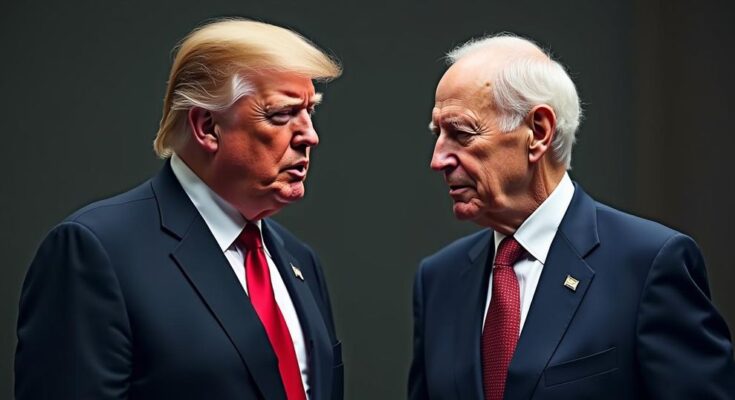In comparing the economic impacts of Trump and Biden’s administrations, Biden’s tenure has witnessed stronger GDP growth and job creation; however, significant inflation has greatly affected public perception, casting shadows over economic achievements and leading voters to focus more on price increases than overall growth.
As the political landscape heats up, a closer look at the economic track records of former President Donald Trump and current President Joe Biden reveals intriguing insights about the effectiveness of their policies. An examination of the data reveals that while the economy experienced notable expansion under Biden, it was marred by substantial inflation, significantly affecting public perception. When Biden took the helm, he inherited the challenges posed by the COVID-19 pandemic, yet managed to steer the economy towards a 2.9% average growth rate, eclipsing Trump’s 1.9%. In stark contrast, Trump’s administration witnessed a decrease in total payrolls, leaving behind 2.7 million fewer workers. Meanwhile, Biden has overseen a remarkable creation of 16.2 million new jobs, promising renewed vigor to the labor market. Trump’s assertions of creating “one of the greatest economies in the history of our country” appear tenuous when compared against hard data, which indicates that the Trump years were mediocre at best in terms of GDP growth and employment. Despite this, voters remain acutely focused on inflation, a factor that has overshadowed wage growth under Biden. While Trump saw an average inflation rate below 3%, Biden has wrestled with a peak inflation rate of 9%, impacting the purchasing power of Americans. The battle over narratives in economic policy is fierce, with both candidates wielding statistics to bolster their claims. Therefore, understanding the nuances behind these numbers is imperative for informed voting at the polls.
In the arena of American politics, economic performance is a pivotal battleground for candidates seeking office. As President Biden and former President Trump campaign on their respective economic records, it becomes vital to dissect their actual achievements against the backdrop of a tumultuous global landscape. The handling of the COVID-19 pandemic, supply chain issues, wars abroad, and inflation rates all play a significant role in shaping public opinion and understanding the implications of economic policies. The dive into GDP growth rates, employment statistics, and inflation emerges as more than just numbers—it’s a battle for the hearts and minds of the electorate.
In summary, the economic evaluations reveal that while Biden’s administration has ushered in stronger GDP growth and job creation compared to Trump’s tenure, soaring inflation has overshadowed these achievements. Voter sentiment suggests a leaning towards concerns about inflation rather than the growth metrics. Ultimately, the economic narrative continues to evolve, highlighting the complexity of interpreting economic success, especially during challenging times. While numbers tell a story, the real tale lies in how those numbers manifest in the everyday lives of Americans.
Original Source: www.inquirer.com



